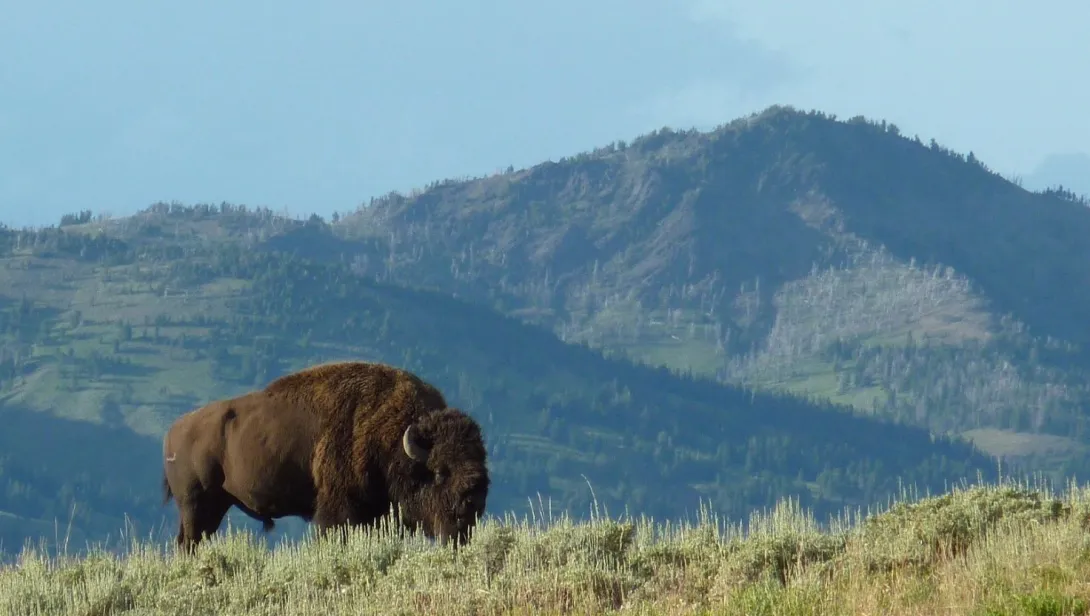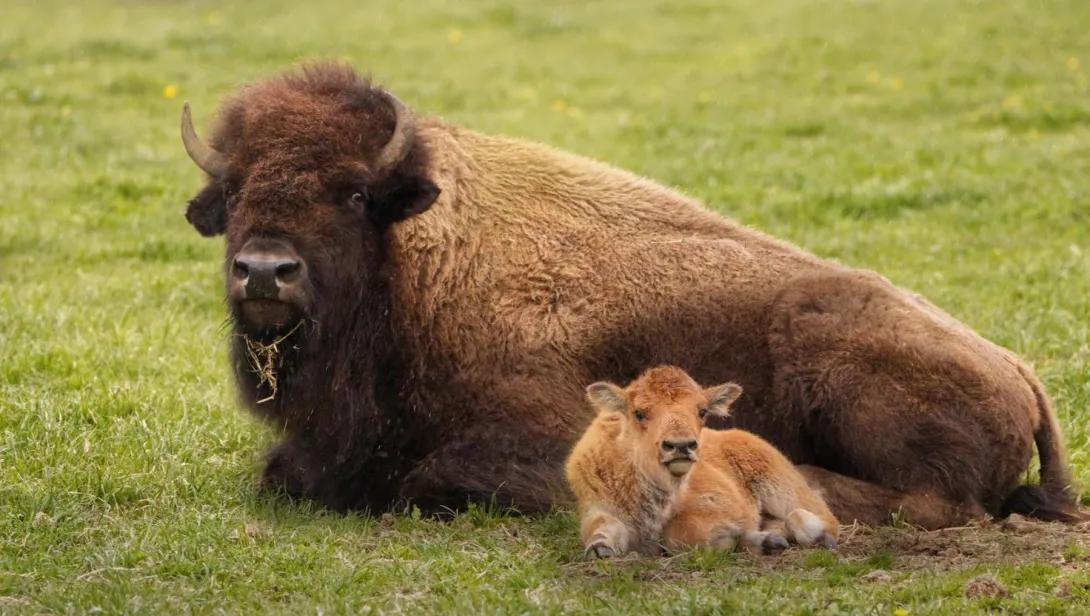Skip to main content
General Information
- The Bison is a large, herbivorous mammal native to North America and Europe.
- There are two main species: the American bison (Bison bison) and the European bison (Bison bonasus).
- Bison are often mistakenly called buffalo, but true buffalo are found in Africa and Asia.
- They are known for their massive size, shaggy coats, and curved horns.
- The American bison is the largest land mammal in North America.
Physical Characteristics
- Adult males, called bulls, can weigh between 900 to 1,000 kg (2,000 to 2,200 lbs).
- Females, known as cows, are smaller, weighing around 450 to 550 kg (1,000 to 1,200 lbs).
- Bison stand about 1.8 meters (6 feet) tall at the shoulder.
- They have a hump on their shoulders, which is made of powerful muscles used for plowing through snow.
- Their thick, shaggy fur helps them survive harsh winters.
- Bison have short, curved horns that they use for defense and dominance battles.
Habitat and Adaptation
- American bison are primarily found in grasslands, prairies, and river valleys.
- European bison live in forests and are more adapted to woodland environments.
- Bison are highly adaptable and can survive in extreme temperatures.
- Their thick fur and fat reserves help them withstand cold winters.
- Bison use their strong heads to plow through snow in search of food.
Diet and Feeding Behavior
- Bison are herbivores, primarily feeding on grasses, sedges, and shrubs.
- They graze for up to 11 hours a day.
- Bison have a four-chambered stomach that allows them to digest tough plant material.
- They help maintain the ecosystem by spreading seeds and fertilizing the soil.
Social Behavior
- Bison are social animals and live in herds.
- Herds are usually led by dominant females, while males form separate bachelor groups.
- During the mating season, bulls engage in headbutting battles to compete for females.
- They communicate through grunts, snorts, and body language.
Reproduction and Lifespan
- The breeding season (rut) occurs between July and September.
- After a gestation period of about 9 months, cows give birth to a single calf.
- Newborn bison calves have a reddish-brown coat and are nicknamed "red dogs."
- Calves begin grazing within a few weeks but stay with their mothers for about a year.
- Bison have an average lifespan of 15-20 years in the wild.
Threats and Conservation
- Bison populations declined due to overhunting in the 19th century.
- By the late 1800s, fewer than 1,000 bison remained in North America.
- Conservation efforts, including national parks and breeding programs, helped restore their numbers.
- Today, there are over 500,000 bison, but many live in managed herds.
- European bison were also on the brink of extinction but have been successfully reintroduced into the wild.
Interesting Facts
- The American bison is the national mammal of the United States.
- Bison can run at speeds of up to 55 km/h (35 mph).
- Despite their massive size, bison are excellent swimmers.
- Their hooves and weight naturally aerate the soil, benefiting grassland ecosystems.
- Bison are featured in many Native American cultures and were essential for survival.

